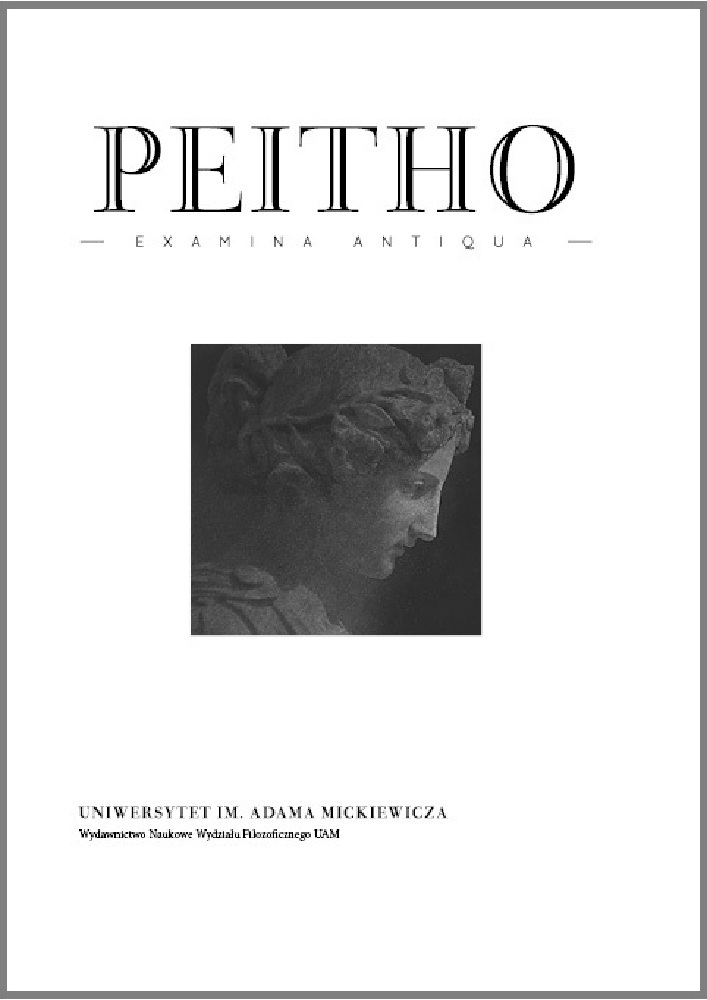Abstract
In this paper I propose to show: 1) that in Phys. II 8 Aristotle takes Empedocles as a paradigm for a theoretical position common to all philosophers who preceded him: the view that materialism implies a mechanistic explanation of natural becoming; and 2) that, since Empedocles is regarded as a philosopher who clearly expresses the position of all mechanistic materialists, Aristotle builds his teleological arguments precisely to refute him. Indeed, Aristotle believes that refuting the arguments of Empedocles – the champion of mechanism – means refuting the mechanistic theory itself. In order to illustrate this point, I will discuss some passages from Phys. II 8, while also turning to consider the Neoplatonic commentators on Aristotle’s Physics. I will then endeavour to explain why in 198b19 ff. Aristotle formulates the argument of rain, which has attracted so much attention from scholars of the Physics: I will consider whether Aristotle believes that rain serves a purpose, contrary to what he claims with regard to meteorological phenomena in Meteorologica.
References
Barnes, J., 1991, The Complete Works of Aristotle, J. Barnes (ed.), Princeton N.J.
Bartels, K., 1965, “Der Begriff Techne bei Aristoteles,” in: H. Flashar, K. Gaiser (hrsg.), Synousia. Festgabe für W. Schadewaldt, Pfullingen, pp. 275–287.
Cardullo, R.L., 2005, “L’analogia τέχνη-φύσις e il finalismo universale in Aristotele Fisica II,” in: R.L. Cardullo, G.R. Giardina (cur.), La Fisica di Aristotele oggi. Problemi e prospettive, Catania, pp. 51–109.
Carteron, H., 1926, Aristote. Physique, Paris.
Charlton, W., 1970, Aristotle’s Physics I and II, Oxford.
Furley, D., 1986, “The Rainfall Example in Physics 2.8,” in: A. Gotthelf (ed.), Aristotle on Nature and Living Things. Studies Presented to David M. Balme, Pittsburg, pp. 177–182.
Furley, D., 1989, Cosmic Problems, Cambridge.
Giannantoni, G., 1998, “L’interpretazione aristotelica di Empedocle,” Elenchos 19 [2], pp. 361–411.
Giardina, G.R., (2014), “Jean Philopon, commentateur d’Aristote Physique II 8,” Revue de Philosophie Ancienne 32, pp. 177–221.
Giardina, G.R., 2015, “Providence in John Philoponus’ Commentary on Aristotle’s Physics,” Chôra 13, pp. 149–172.
Mansfeld, J., 2011, “Aristotle on Anaxagoras in relation to Empedocles in Metaphysics A,” Philologus 155 [2], pp. 361–366.
Owens, J., 1968, “Teleology of nature in Aristotle,” The Monist 52, pp. 159–173.
Pellegrin, P., 2000, Aristote. Physique, Paris.
Sayili, A.M., (1939), “The Aristotelian Explanation of the Rainbow,” Isis 30 [1], pp. 65–83.
Theiler, W., 19652, Zur Geschichte der teologischen Naturbetrachtung bis auf Aristoteles, Berlin.
Timpanaro Cardini, M., 1950, “ΦΥΣΙΣ e ΤΕΧΝΗ in Aristotele,” in: V.E. Alfieri, M. Untersteiner (cur.), Studi di filosofia greca, Bari, pp. 279–305.
Wardy, R., 1993, “Aristotelian Rainfall or the Lore of Averages,” Phronesis 38 [1], pp. 18–30.
Wilberding, J., (2014), “Teratology in Neoplatonism,” British Journal for the History of Philosophy 22 [5], pp. 1021–1042.
Yartz, F.J., 1997, “Aristotle on Monsters,” The Ancient World 28 [1], pp. 67–72.
License
Peitho provides immediate open access to its content on the principle that making research freely available to the public supports a greater global exchange of knowledge.
